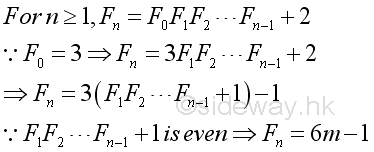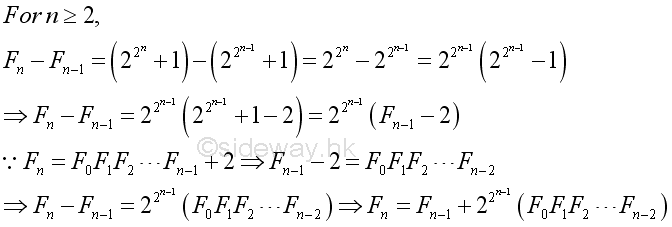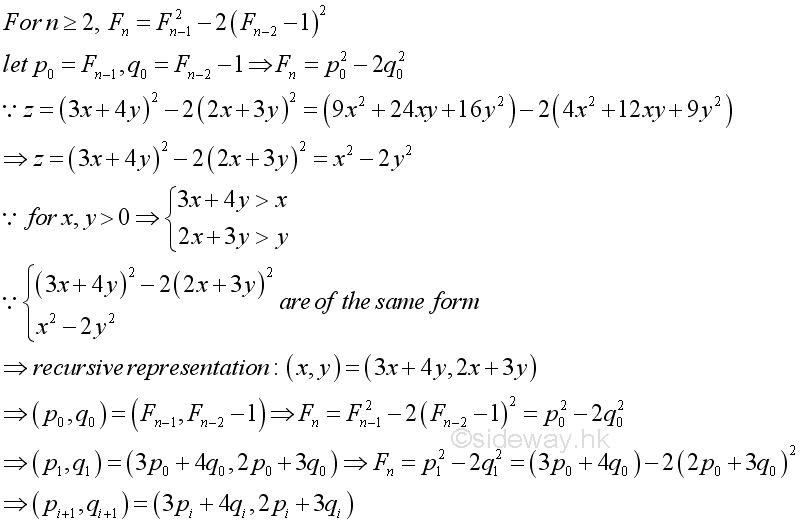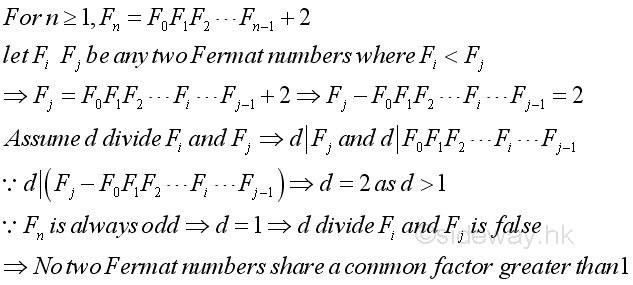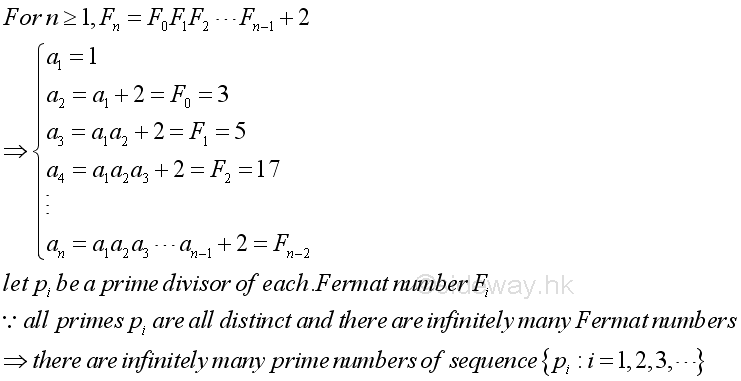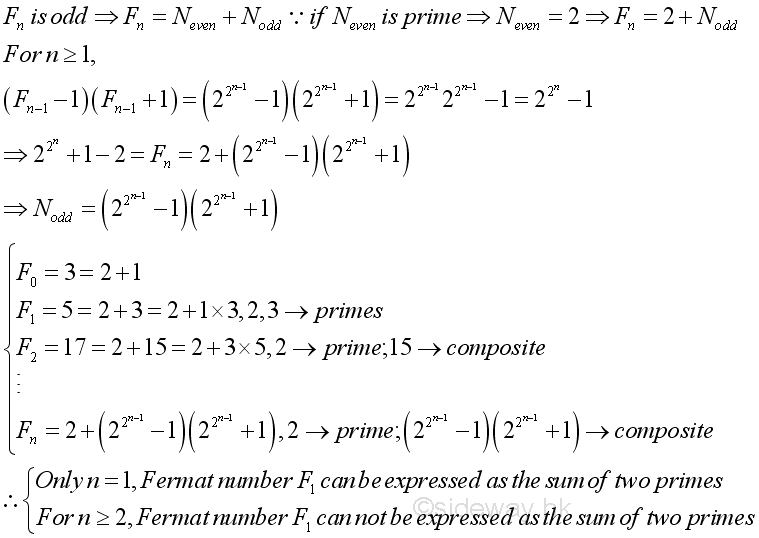 Sideway
BICK BLOG from Sideway
Sideway
BICK BLOG from Sideway
|
Link:http://output.to/sideway/default.asp?qno=160100007 Fermat Number
Fermat NumbersFor a positive integer of the form 2p+1, the number can be a prime number, only if p is a power of 2. For a number of p with an odd factor, the number must be a composite number. Proof 
Fermat studied these numbers and found that the first few numbers are prime numbers. Sometimes, but less common, a number of form ap=2p+1 is called Fermat number. But a Fermat number is usually refered to a number with the special case of the form Fn= 22n+1. Primes with this form are therefore called Fermat primes. For examples, 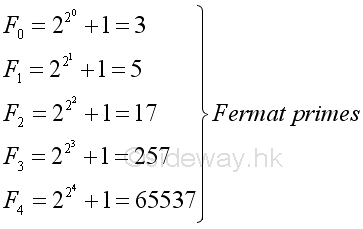
However, Fermat numbers with n greater or equal to 5 are not always prime numbers. In fact, all known Fn as of 2015 are not prime numbers. For example, F5 is a composite. 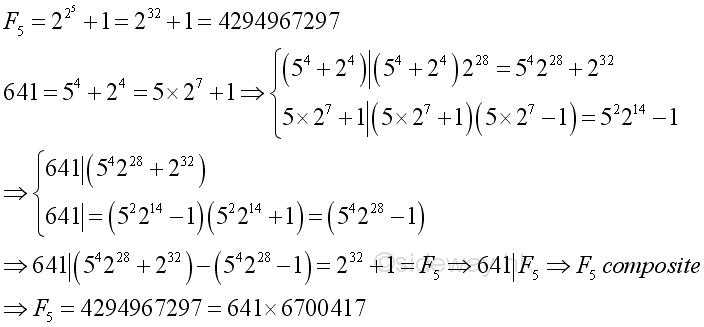
Basic Properties of Fermat NumbersBasic properties or recurrence relations of Fermat Numbers
Proposition 1
Proof 
Proposition 2
Proof 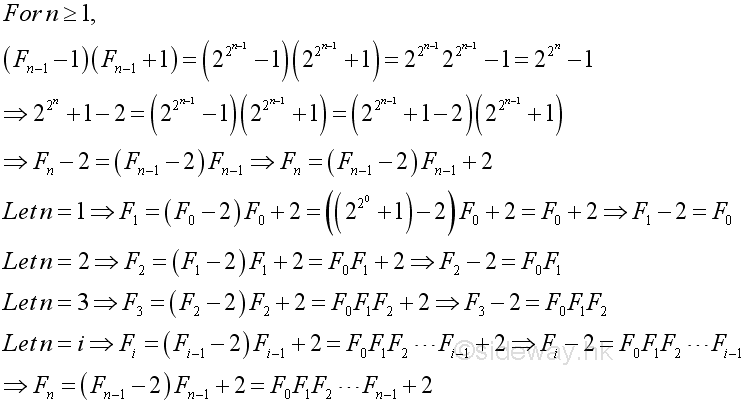
Proposition 3
Proof 
Proposition 4
Proof
Proposition 5 For n greater than or equal to 2, a Fermat number can has infinitely many representations of the form p2-2q2 where p and q are both positive integers. Proof: Fermat numbers defined in Proposition 3 are of this form. In other words, for n great than or equal to 2, there always exists a pair of integers p and q. And other pairs of integer can be obtained recursively. Imply
Proposition 6 Any two Fermat numbers Fn=2 2n+1 are pairwise relatively prime to each other. Proof: From Proposition 2, imply
Proposition 7 For n greater than or equal to 2, no Fermat number can be expressed in terms of the sum of two primes. Proof: As in Proposition 2, imply
|
Sideway BICK Blog 07/01 |
|||||||||||||||||||||||||||||||||||||||||||||||||||||||||||||||||||||||||||||||||||||||||||||||||||||||||||||||||||||||||||||||||||||






